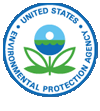 Administrator Jackson Announces EPA's International Priorities
Administrator Jackson Announces EPA's International Priorities
Agency to work with other countries to curb pollution at home and abroad
U.S. Environmental Protection Agency (EPA) Administrator Lisa P. Jackson has announced the agency's international priorities at a meeting of the Commission for Environmental Cooperation she is attending in
"Pollution doesn't stop at international borders, and neither can our environmental and health protections. The local and national environmental issues of the past are now global challenges," said EPA Administrator Lisa P. Jackson. "This document sends a strong message to our partners in the international community that our challenges are shared challenges, and that we are eager to work together on solutions. Along with the seven EPA priorities I issued earlier this year, these six international priorities will guide our work during the months and years ahead."
When EPA was established 40 years ago, Americans were concerned about lakes and rivers burning and air pollution in their own cities. In 2010, the environmental challenges are global, with pollutants from around the world ending up in
EPA's bilateral and multilateral partnerships have taken on new significance in the face of shared environmental and governance challenges, such as global climate change and improving children's environmental health outcomes. The agency's international priorities will guide EPA's collaboration with CEC and all international partners.
The priorities include:
· Building Strong Environmental Institutions and Legal Structures. Countries need adequate governmental structures to enforce environmental protections. EPA will work with countries such as
· Combating Climate Change by Limiting Pollutants. EPA has taken important steps to reduce greenhouse gas emissions at home, but the global challenge of climate change requires a global solution. To make significant progress in reducing the effects of climate change, pollution must be cut throughout the world. EPA will promote global strategies to reduce greenhouse gas emissions and other pollutants such as methane from landfills and black carbon from cookstoves. These pollutants are damaging especially vulnerable regions such as the Himalayan glaciers and the
· Improving Air Quality. Much of the pollution that contributes to climate change and increases cases of asthma and other respiratory diseases is concentrated in urban areas, which are growing in the
· Expanding Access to Clean Water. Water bodies in the
· Reducing Exposure to Toxic Chemicals. Chemicals are prevalent in everything from food to baby bottles. As children develop, they are especially vulnerable to these chemicals, particularly mercury and lead. While EPA works closely with Congress to strengthen our chemical laws, the agency also will work with our global partners to provide protections for people and consistency for industry. In working with partners like the United Nations Environment Programme, EPA will strive to reduce or eliminate the impact of pesticides and other toxic chemicals.
· Cleaning Up E-Waste. The electronics that provide us with convenience often end up discarded in developing countries where improper disposal can threaten local people and the environment. EPA recognizes this urgent concern and will work with international partners to address the issues of E-waste. In the near-term, EPA will focus on ways to improve the design, production, handling, reuse, recycling, exporting and disposal of electronics.
The Commission for Environmental Cooperation was created by the North American Agreement on Environmental Cooperation under the North American Free Trade Agreement. The group of
More information on EPA's international priorities: http://www.epa.gov/international/topsix.html
For a transcript of Administrator Lisa P. Jackson's speech: http://yosemite.epa.gov/opa/admpress.nsf/12a744ff56dbff8585257590004750b6/04fb75c64066cd8c85257782005b2782!OpenDocument
